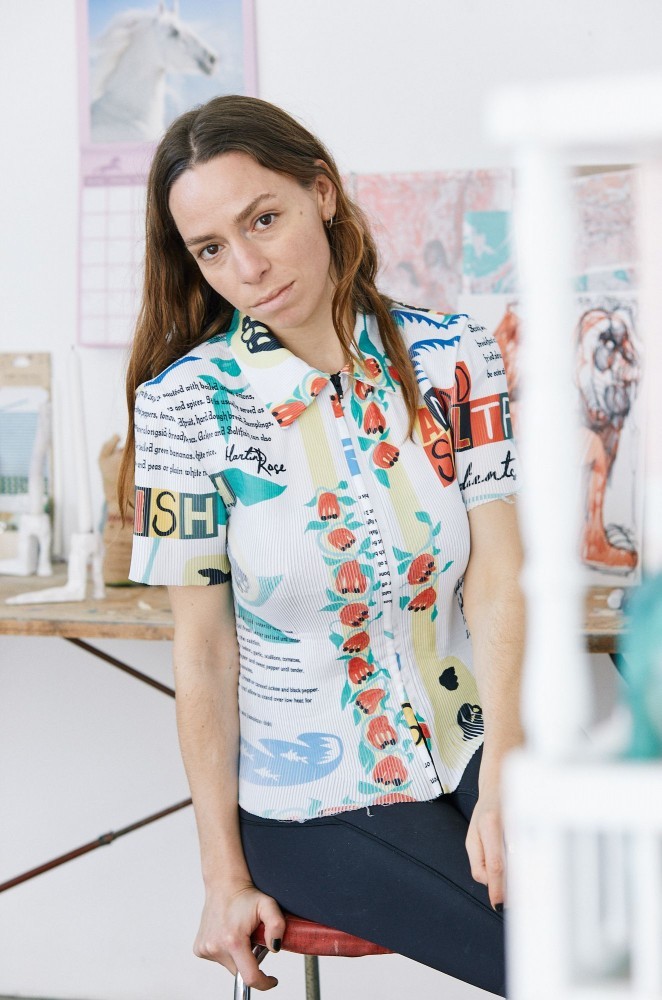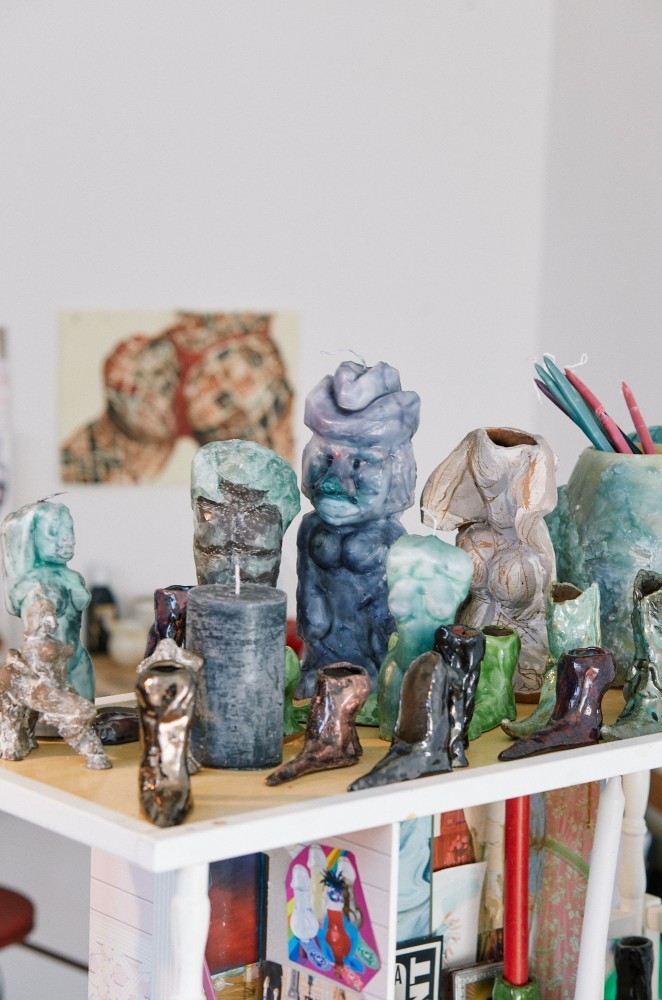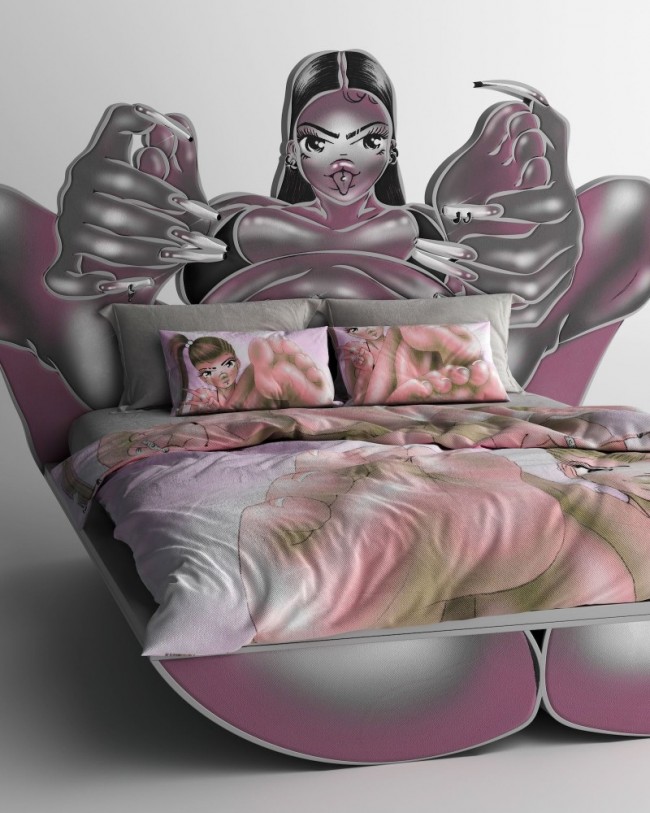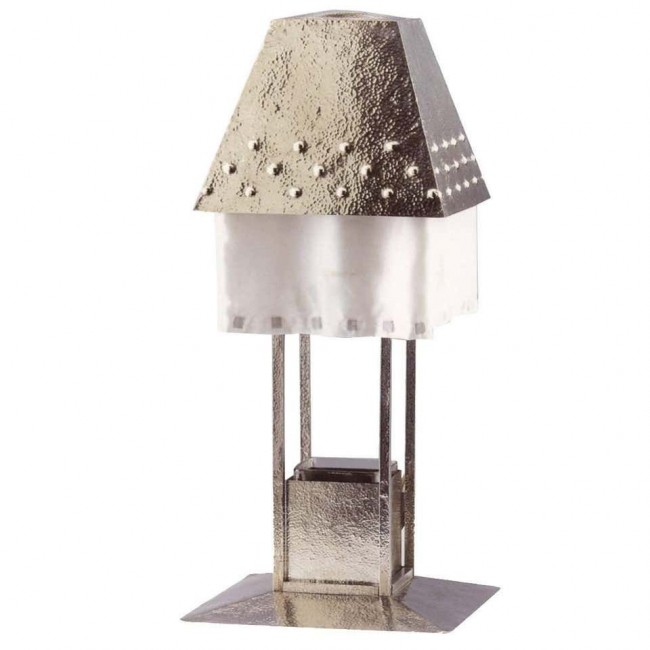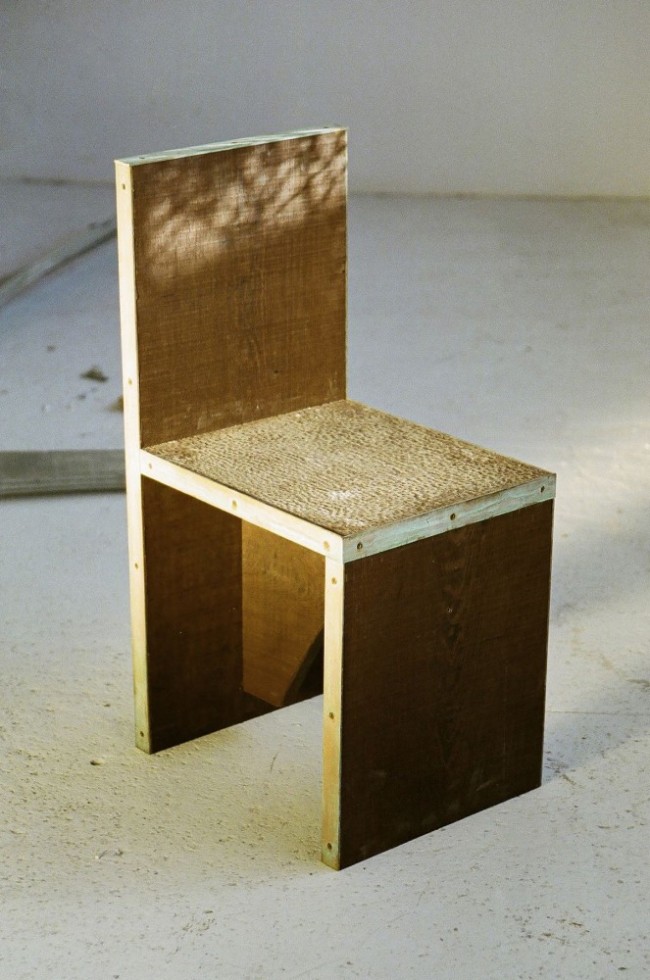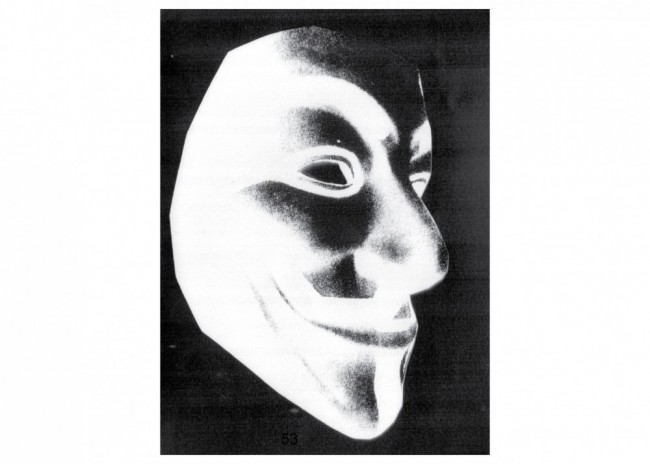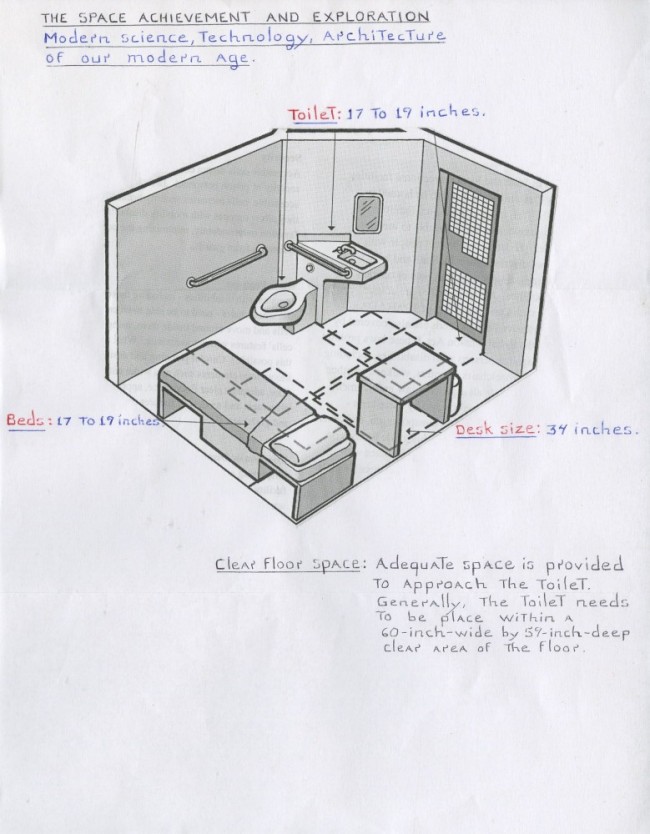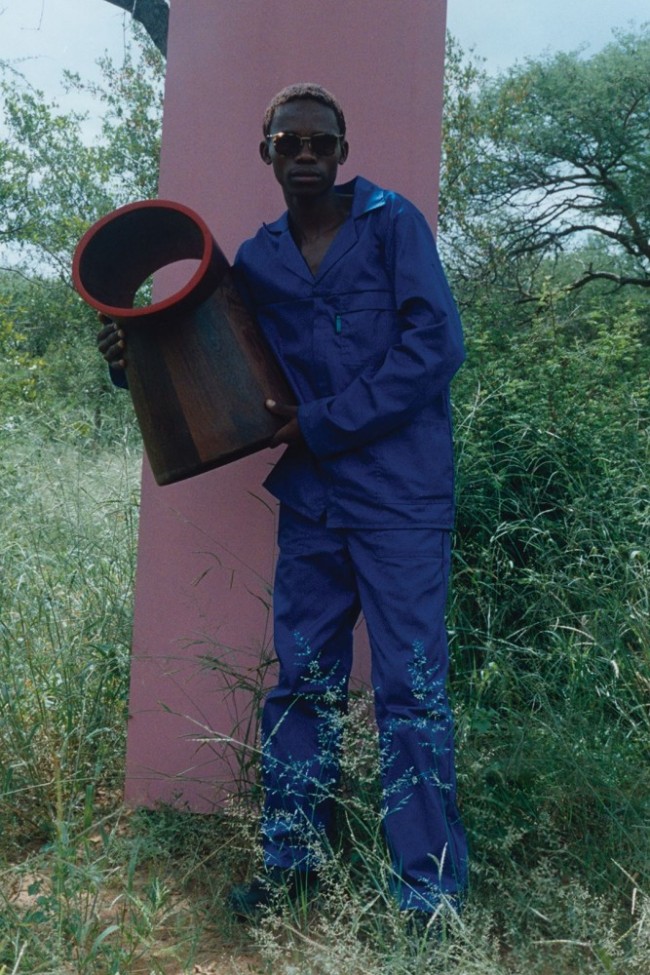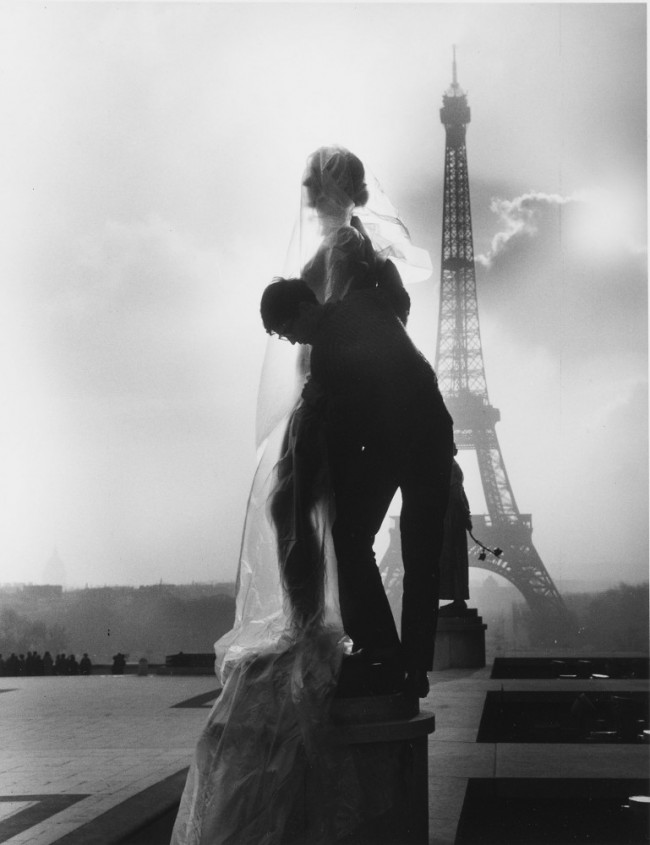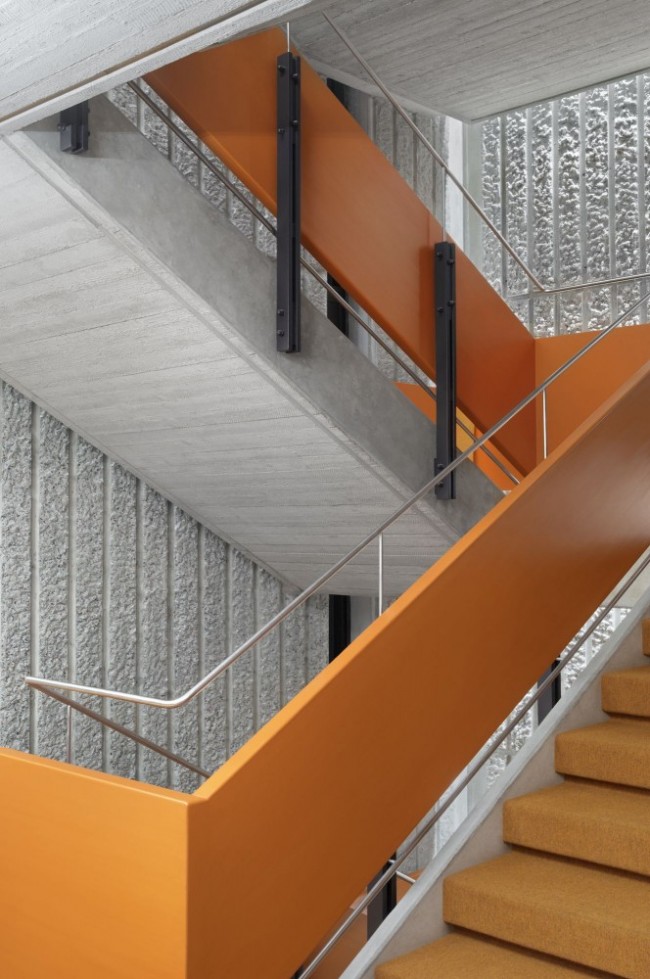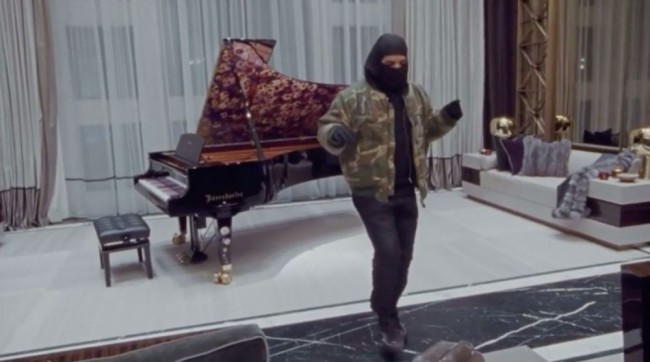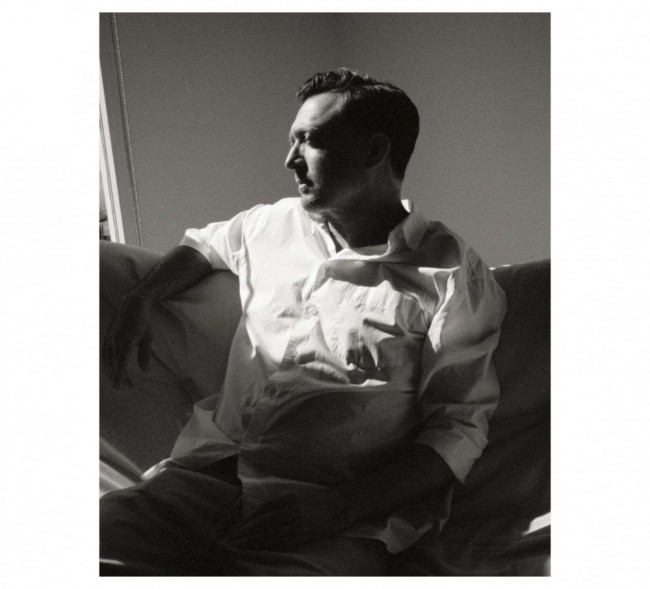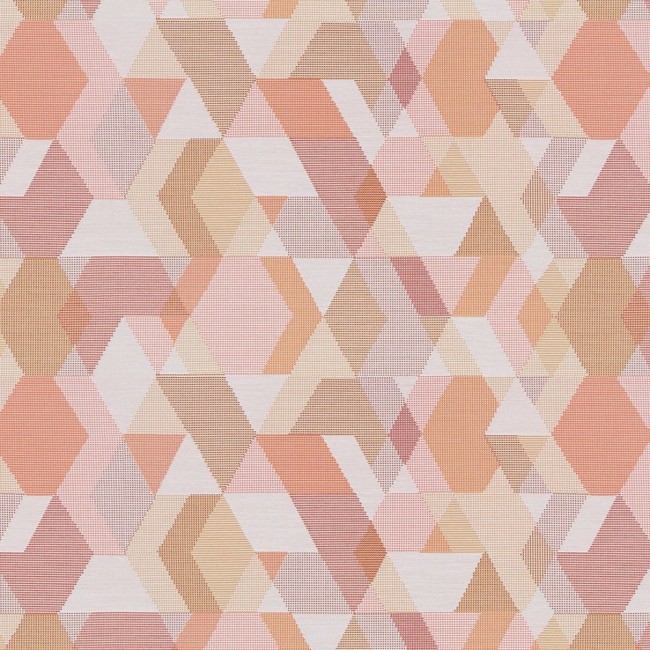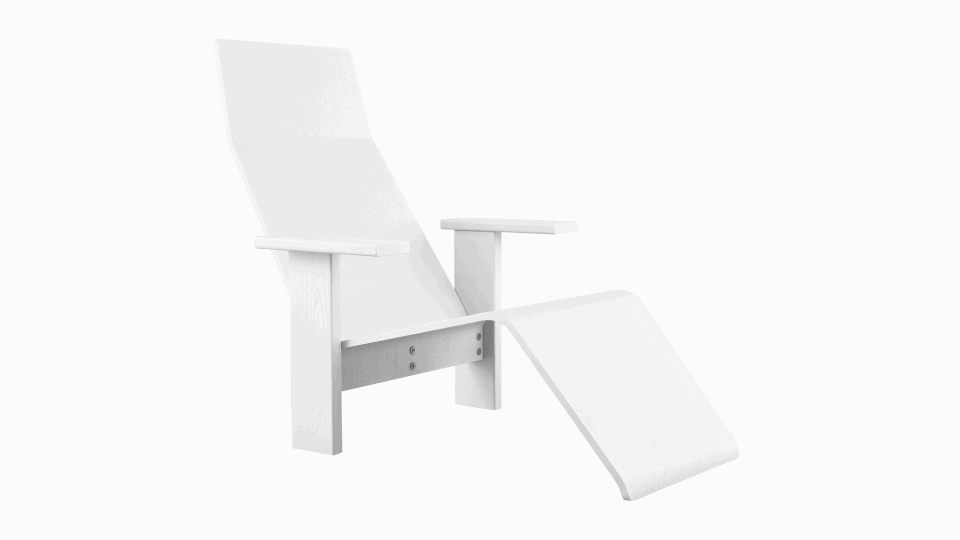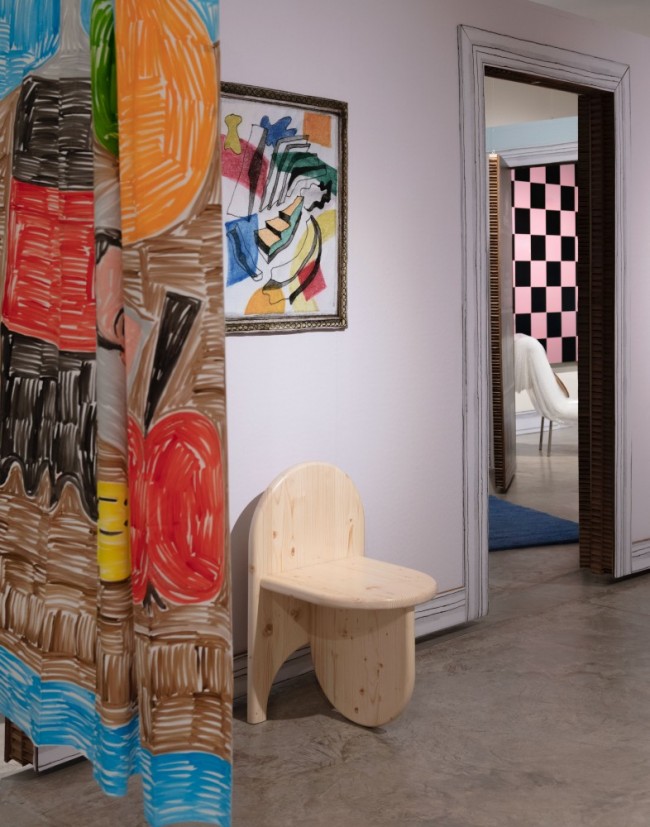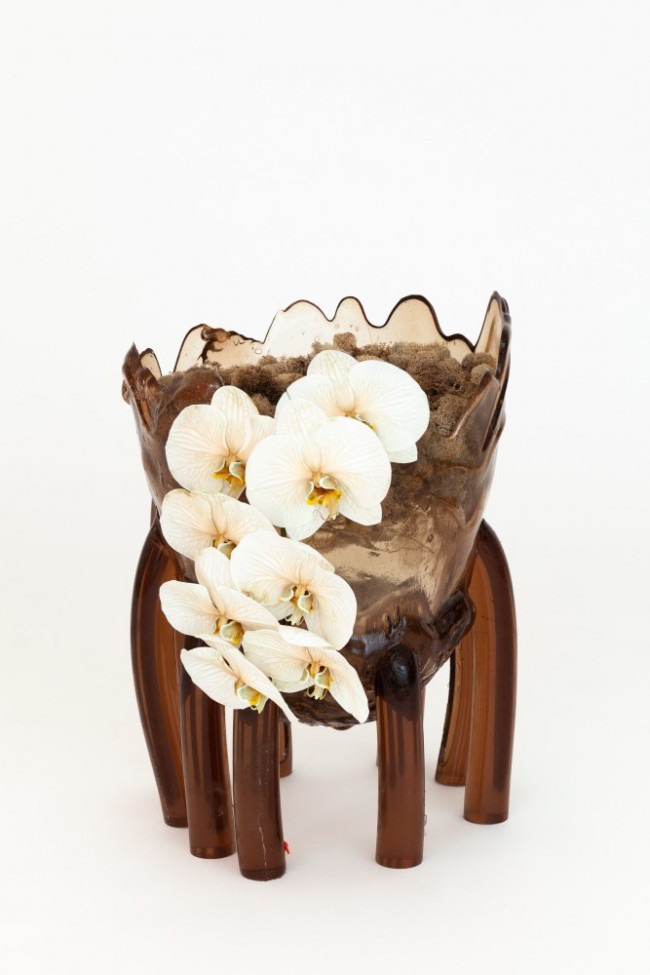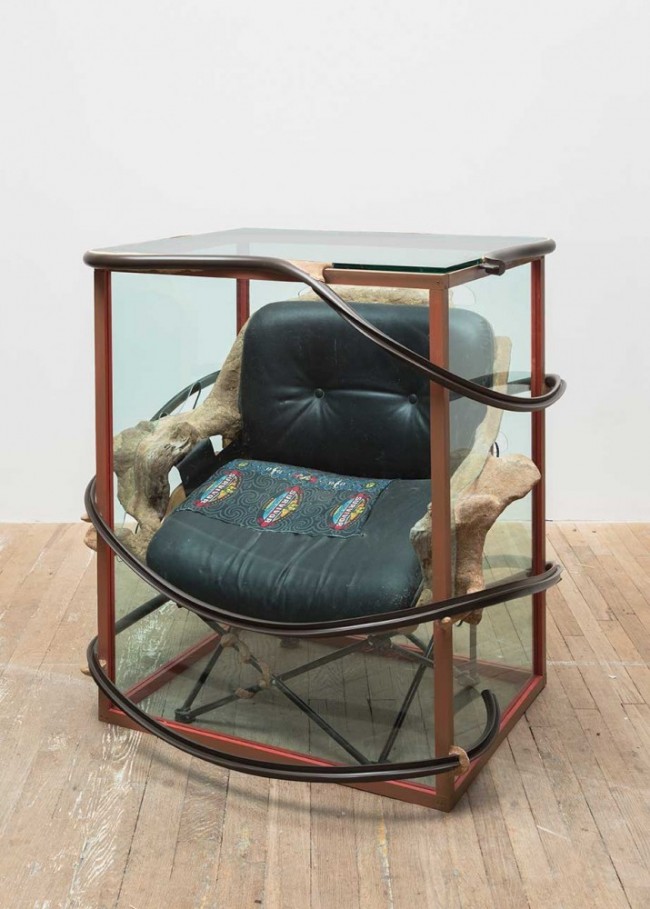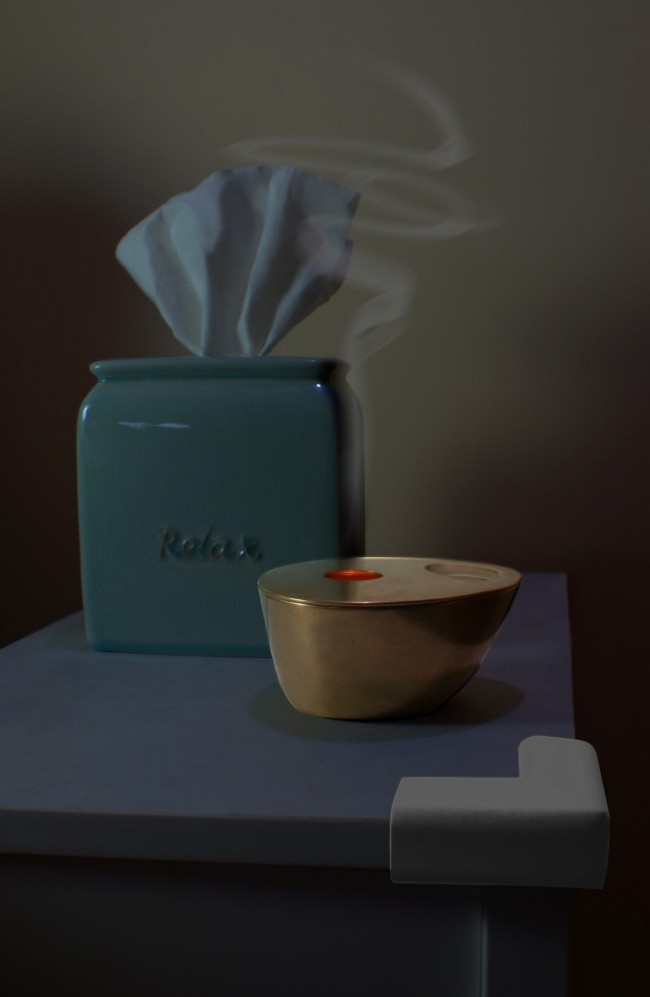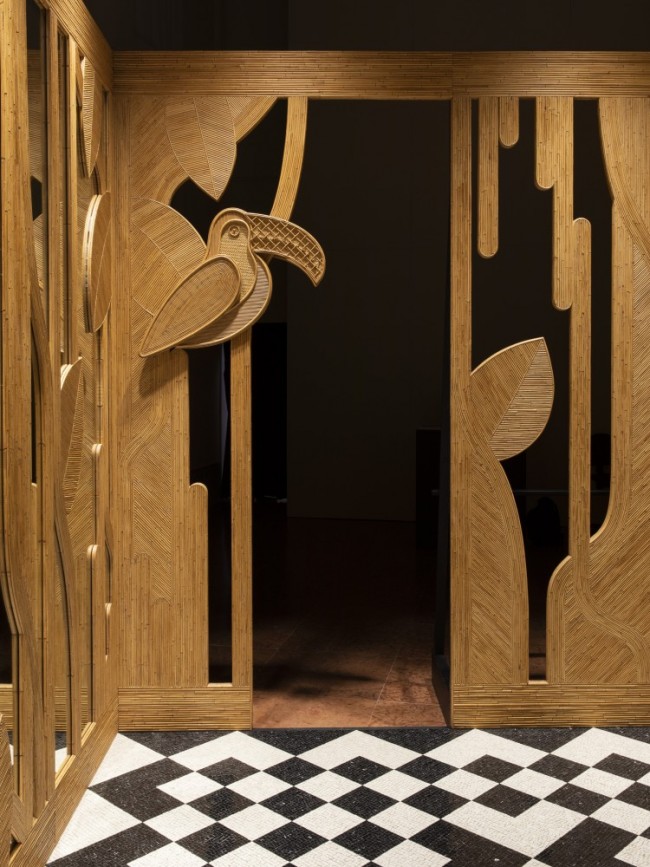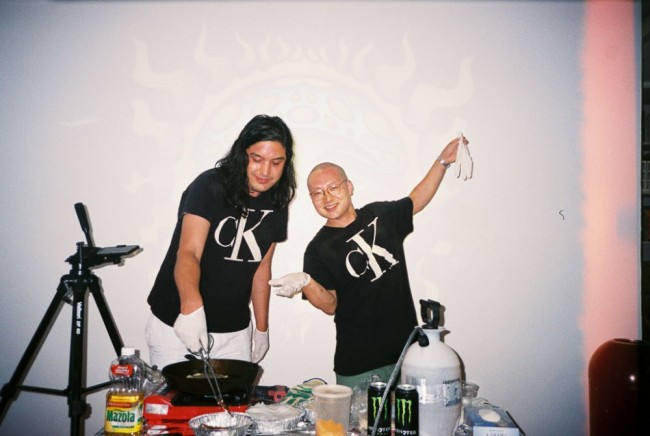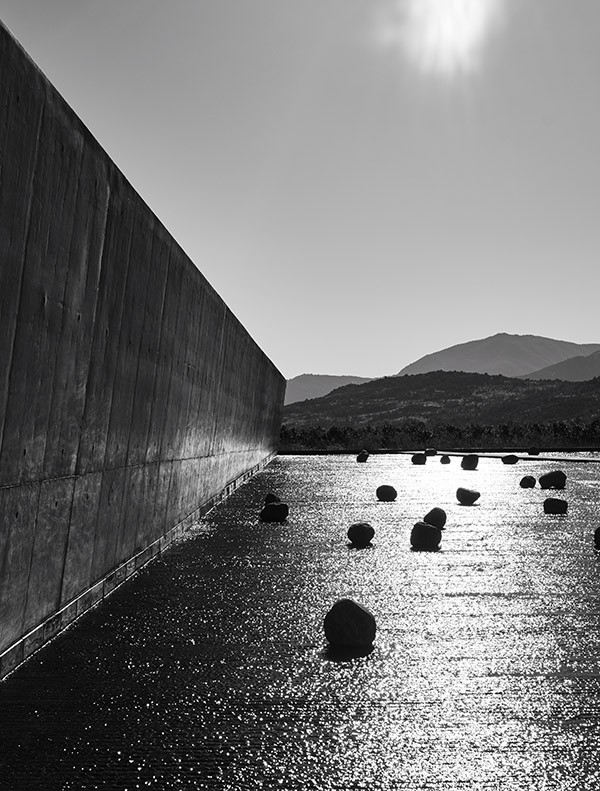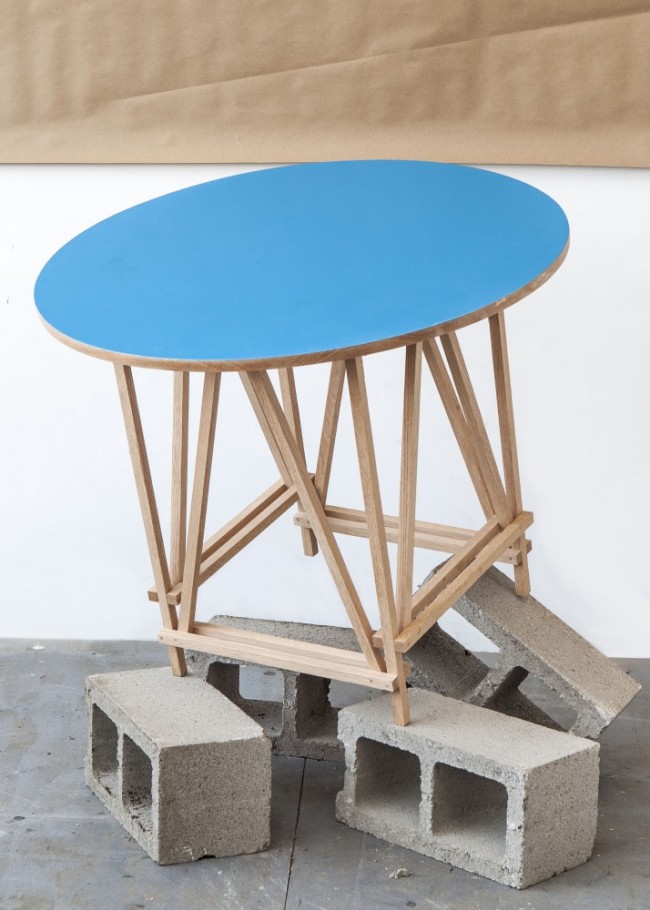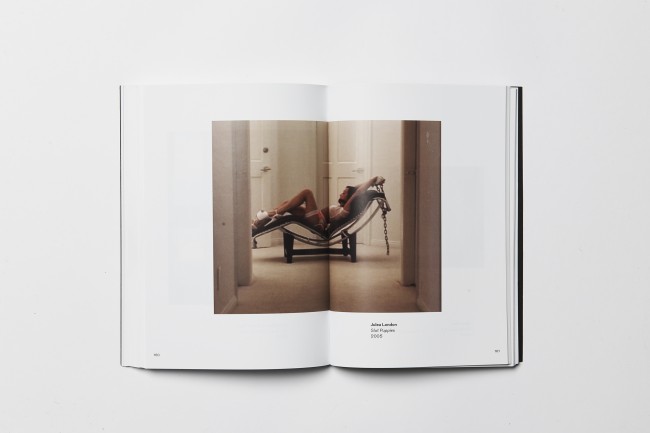Artist Laura Welker Makes Dollhouses For Her Strange Universe Of Objets D’Arts
“I think everyone should have a dollhouse. It’s a very nice way to spend your time,” says German artist and designer Laura Welker, whose own dollhouse in her Berlin studio functions as a showroom for her objets d’art, including penis candles, wax troll figures, and sculptural hands wrapped in tensor bandages. “It’s a fantastic way to design. If you put something in this little universe, you immediately see its potential,” explains Welker. “If you put a plate inside the dollhouse, for example, it can suddenly be used as a table. And it inspires you to think maybe this could be a nice design for a real table.”

Laura Welker at work in her Berlin studio. Photographed by Adrian Escu for PIN–UP.
Outside of her dollhouse, Welker is best known for her high-heeled candleholders. “I think of shoes like wearable pieces of furniture,” she says. Footwear has long been a point of fascination for the artist who, a decade ago, studied fashion at the Royal Academy of Fine Arts in Antwerp and, after graduating, launched a shoe brand with designer Arielle de Pinto. But the shoe candleholders started with a one-off gift Welker made for her mother when she broke her hip. “The candleholders brought her good luck,” the artist recalls. “Very soon after she was able to walk again.”
There’s an element of magical thinking to Welker’s candleholders. “I tell everyone I give these to — or who buys them — that they should write down a wish and tuck the note under the shoe. When the candle burns down, your wish will come true.” The transformative potential of these miniature high heels is related to how Welker sees footwear in her day-to-day. “Whenever I’m in a difficult situation, I always buy shoes,” she explains. “Wearing certain kinds of shoes gives you superpowers. They change your walk and they can help you in some situations.”

Artist and designer Laura Welker tests out new creations in her dollhouse in her Berlin studio. Photographed by Adrian Escu for PIN–UP.
In recent years, Welker has delved further into design, making candleholders as well as plates for Table Dance, her friends’ bar in Antwerp’s red-light district, which opened in 2018. The bar’s co-owner and chef Michelle Woods also introduced Welker to her current obsession with trolls, buying at auction a set of Heico collectibles — popular in West Germany in the 1970s. In addition to making sculptures and candles in their abject image, this past summer Welker collaborated with artist Kamilla Bischof on a video performance in which, dressed as lifesized trolls, they cooked dishes with hand-picked fruits, vegetables, and insects. A bizarre commentary on the future of food, the video was included in Der Hausfreund, an exhibition in Vienna last year centered around the late Swiss decorative artist Friedrich (aka Federico) von Berzeviczy-Pallavicini (1909–89), putting his work in dialogue with contemporary artists who share the same eccentric spirit.

Trolls candles and high-heeled candleholders by Laura Welker. Photographed by Adrian Escu for PIN–UP.
Welker’s next show will be a series of ten wax troll sculptures at the Vienna art space Bar du Bois, and she’s also experimenting with making them in glass. “My next project is troll lamps,” she declares. The material constraints around how Welker makes her work distinguish her respective art and design practices. “With art, I do it without thinking about what it’s for, and then a place to display the work can always be found. Design is a way to make a living.”
Text by Whitney Mallett.
Photography by Adrian Escu for PIN-UP.
Taken from PIN-UP 28, Spring Summer 2020.

